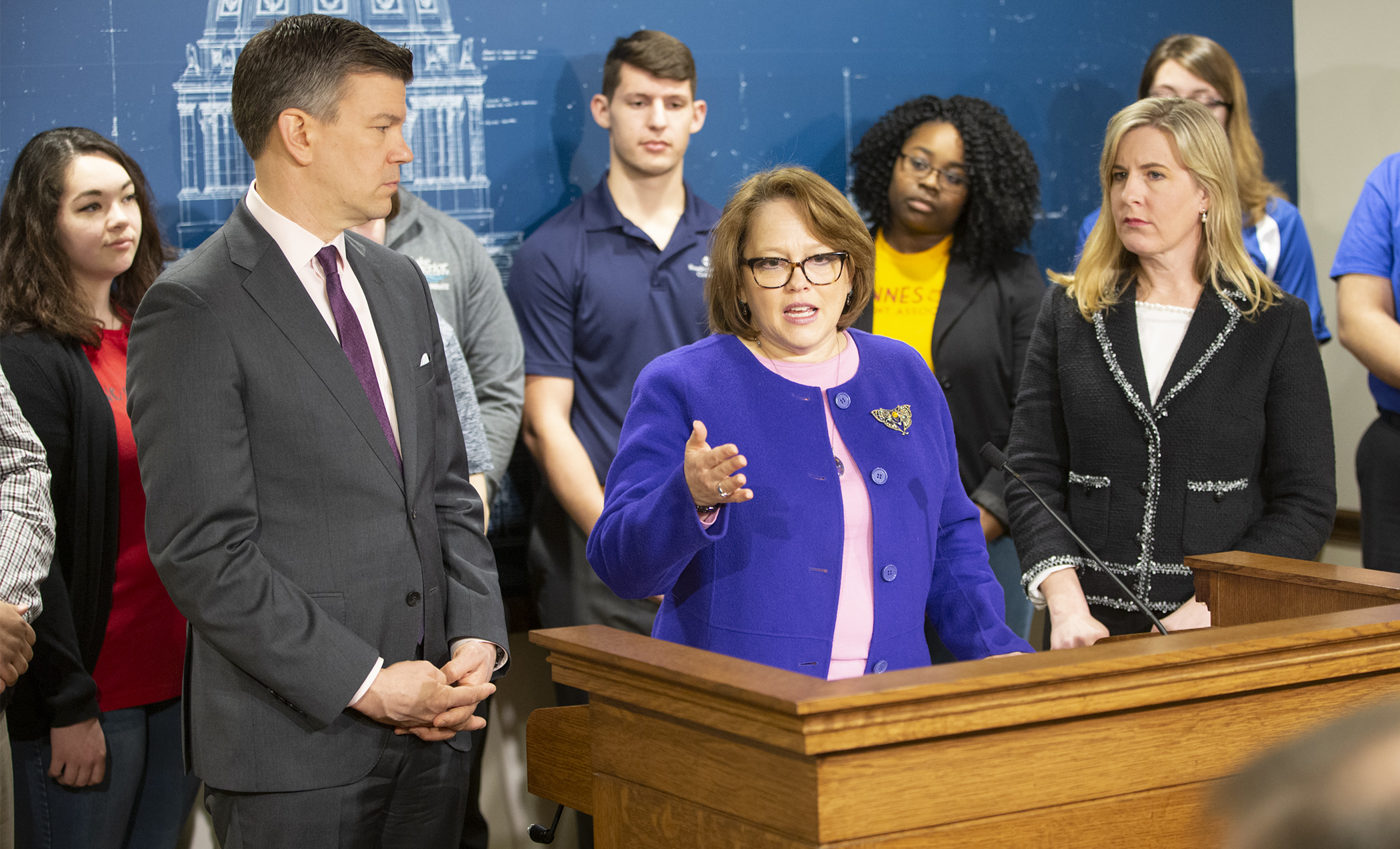Tuition freeze part of unveiled omnibus higher education finance bill

Increased funding for the state’s public colleges and universities and a possible tuition freeze for their students are part of the omnibus higher education finance bill that was unveiled Thursday.
It is scheduled to be presented to the House Higher Education Policy and Finance Division Monday and voted on the next day.
HF2544, as amended, and sponsored by Rep. Connie Bernardy (DFL-New Brighton), would allocate $3.57 billion for the 2020-21 biennium to Minnesota State, the University of Minnesota, Office of Higher Education -- which administers state financial aid programs – and the Mayo Foundation for Mayo Medical School and family and residency programs.
Gov. Tim Walz’s higher education budget request was $3.42 billion, or about $150 million less than contained in the House bill.
HF2544 proposes $94.7 million more in spending for Minnesota State than the Walz budget, and $63.1 million more for the University of Minnesota. The governor’s budget allocates $17.5 million more to the Office of Higher Education than the House bill.
[MORE — Download the spreadsheet]
The companion, SF2415, sponsored by Sen. Paul Anderson (R-Plymouth), awaits action by the Senate Higher Education Finance and Policy Committee. In its current form, that bill recommends $3.42 billion in appropriations for higher education, about $7 million less than Walz proposes.
The House bill would appropriate $1.6 billion to Minnesota State, including $18 million to upgrade the ISRS system used for administering finances, aid, housing, human resources and other school functions.
The University of Minnesota would receive $1.42 billion in the 2020-21 biennium, including $114 million earmarked to make a tuition freeze possible at the university. Other large University of Minnesota expenditures would include $85.8 million for agriculture and extension programs and $30 million for medical school development.
Of the $544.4 million targeted for the Office of Higher Education, $396.7 million would be for state grants to students. It also includes funding for 35 other programs, including $29 million for state work study, $22 million for interstate tuition reciprocity, $13.4 million for child care grants, and $11.8 million for the MNLink Minitex statewide virtual library.
At a Thursday press conference to introduce the bill, Bernardy, who chairs the higher education division, said the bill “eases the financial burden on working families and students, expands eligibility for grants, and will fill gaps in Minnesota’s workforce shortage.”
“This budget has creative solutions to increase food access, mental health support, and services for sexual assault survivors,” added Rep. Laurie Pryor (DFL-Minnetonka).
Related Articles
Search Session Daily
Advanced Search OptionsPriority Dailies
Ways and Means Committee OKs proposed $512 million supplemental budget on party-line vote
By Mike Cook Meeting more needs or fiscal irresponsibility is one way to sum up the differences among the two parties on a supplemental spending package a year after a $72 billion state budg...
Meeting more needs or fiscal irresponsibility is one way to sum up the differences among the two parties on a supplemental spending package a year after a $72 billion state budg...
Minnesota’s projected budget surplus balloons to $3.7 billion, but fiscal pressure still looms
By Rob Hubbard Just as Minnesota has experienced a warmer winter than usual, so has the state’s budget outlook warmed over the past few months.
On Thursday, Minnesota Management and Budget...
Just as Minnesota has experienced a warmer winter than usual, so has the state’s budget outlook warmed over the past few months.
On Thursday, Minnesota Management and Budget...